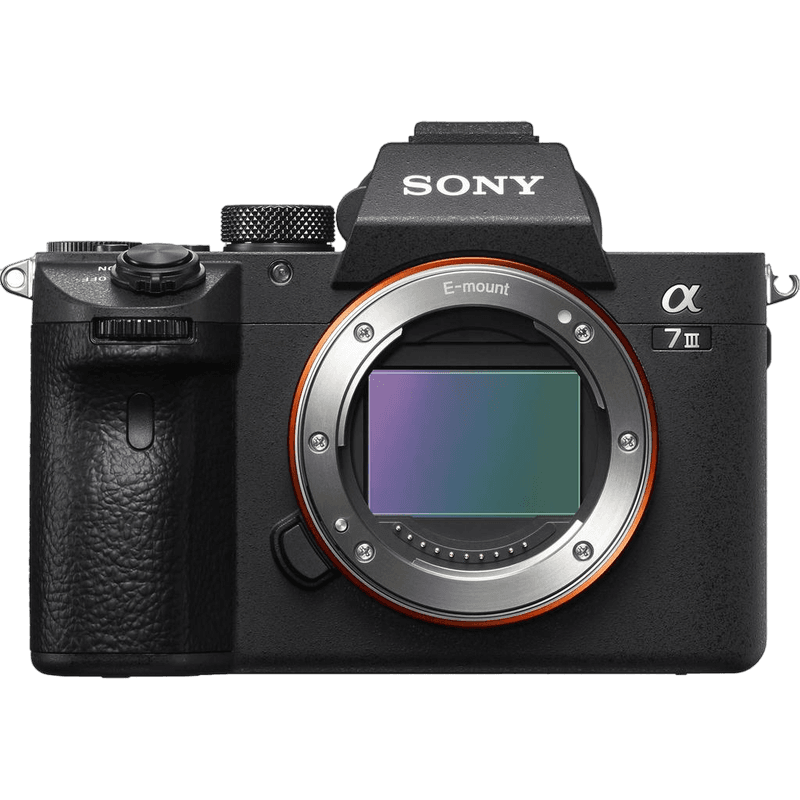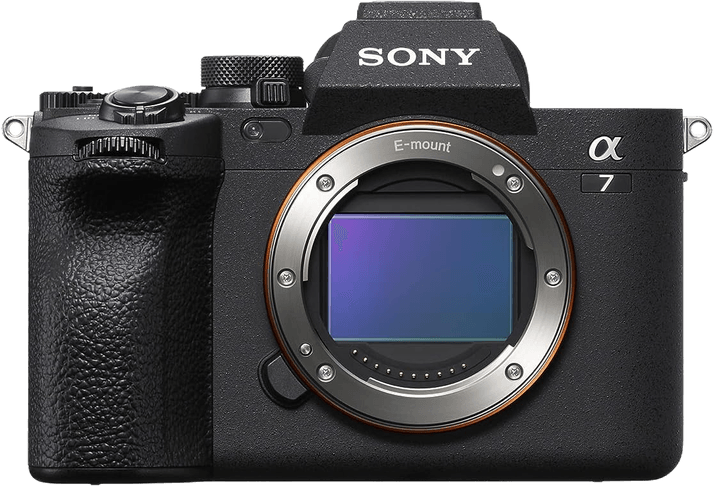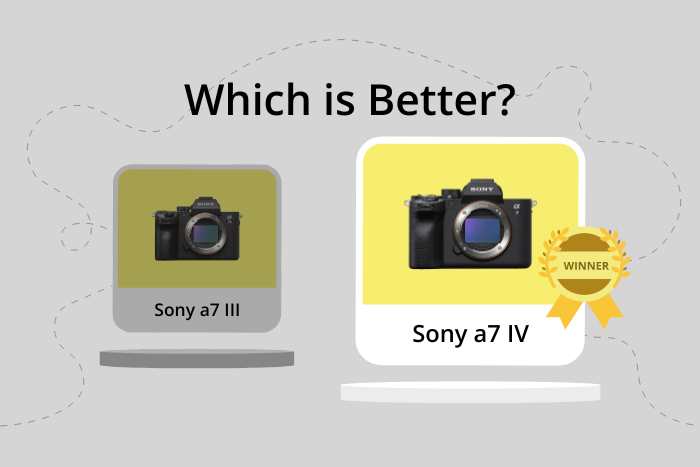Sony a7 III vs a7 IV Comparison
Sony a7 III

Sony a7 IV

The Sony a7 IV outshines the Sony a7 III with a score of 84/100 compared to 80/100. Both cameras are mirrorless, released in 2018 and 2021 respectively. They share similar dimensions, with the a7 IV being slightly larger at 131 x 96 x 80mm and weighing 659g, while the a7 III measures 127 x 96 x 74mm and weighs 650g.
The a7 IV’s higher score is due to its improved features and performance, justifying its higher launch price of $2499 compared to the a7 III’s $2000. However, the a7 III still offers excellent value and solid specifications for its lower price.
Considering the scores and specifications, the Sony a7 IV is the better camera, but the a7 III remains a strong contender for those seeking a more budget-friendly option.
Sony a7 III vs a7 IV Overview and Optics
The Sony a7 IV outperforms the Sony a7 III in optics with a score of 85/100 compared to the a7 III’s 81/100. Both cameras share several specifications, such as a 10 fps shooting speed, CMOS sensor, full-frame sensor size, Sony FE lens mount, and image stabilization. Despite these similarities, there are distinct differences that contribute to the a7 IV’s higher score.
The a7 IV boasts a higher megapixel count of 33 compared to the a7 III’s 24.2 megapixels. This increase in resolution allows the a7 IV to capture more detail and produce sharper images, making it an ideal choice for photographers seeking improved image quality. Additionally, the a7 IV features a more advanced Bionz XR processor, which enhances overall performance and image processing capabilities.
The a7 III, on the other hand, still delivers excellent image quality with its 24.2-megapixel sensor. The DXOMARK score for the a7 III’s sensor is 96, which is only one point lower than the a7 IV’s score of 97. This difference is relatively minor, and the a7 III remains a strong contender in the realm of optics.
Considering the similarities and differences between the Sony a7 III and a7 IV, it is clear that the a7 IV holds a slight advantage in terms of optics. The increased megapixel count and more advanced processor contribute to its higher score and improved image quality. However, the a7 III is still a solid option for those seeking a full-frame mirrorless camera with excellent optics performance.
Sony a7 III vs a7 IV Video Performance
The Sony a7 IV outperforms the Sony a7 III in video capabilities, scoring 91 out of 100 points compared to the a7 III’s score of 70 points. Both cameras share some common specifications, such as a maximum video resolution of 4K and video dimensions of 3840 x 2160. However, the a7 IV surpasses the a7 III in several crucial aspects.
The most significant advantage of the Sony a7 IV over the a7 III is the maximum video frame rate, which is 120fps for the a7 IV and only 30fps for the a7 III. This higher frame rate results in smoother and more detailed slow-motion footage, making the a7 IV the better choice for videographers who require this feature.
While the Sony a7 III does not offer any notable advantages in video capabilities compared to the a7 IV, it may still be suitable for those who do not require high frame rates. The a7 III shares the same 4K video resolution and dimensions as the a7 IV, making it a viable option for videographers who prioritize video quality but do not need the advanced features of the a7 IV.
Comparing the video capabilities of the Sony a7 III and a7 IV, it is clear that the a7 IV is the superior camera. Its higher video score, faster frame rate, and time-lapse functionality make it a more versatile option for videographers seeking advanced features. The a7 III, while still offering 4K video resolution, lacks these additional capabilities, making it a less appealing choice for those prioritizing video performance.
Sony a7 III vs a7 IV Features and Benefits
The Sony a7 IV wins the feature comparison with a score of 83/100, while the Sony a7 III scores 81/100. Both cameras share several specifications, including a 3-inch screen size, touchscreen capabilities, flip screen, and the absence of GPS. Additionally, both models offer WiFi and Bluetooth connectivity.
The winning Sony a7 IV surpasses the a7 III in screen resolution, boasting 1,040,000 dots compared to the a7 III’s 921,600 dots. This higher resolution provides a clearer and more detailed image preview and playback experience for the user. The two-point difference in the feature score reflects this advantage of the a7 IV over its counterpart.
Despite the Sony a7 III’s lower score, it still holds its own as a reliable camera with its shared features, such as the flip screen and connectivity options. However, the a7 III does not outperform the a7 IV in any specific aspect based on the given specifications.
Taking into account the shared features and the a7 IV’s superior screen resolution, the Sony a7 IV emerges as the better option between the two cameras. The a7 III remains a decent choice for those who prioritize other aspects or are on a tighter budget. Ultimately, the choice between these two cameras depends on the user’s preferences and needs.
Sony a7 III vs a7 IV Storage and Battery
Both cameras share common features such as two memory card slots and the NP-FZ100 battery type.
The a7 IV surpasses the a7 III in storage capabilities by accepting CFexpress Type A and UHS-II compatible SD cards, offering faster read and write speeds. Both have USB charging, allowing for convenient charging options and extended usage.
On the other hand, the a7 III has a longer battery life with 750 shots compared to the a7 IV’s 580 shots. However, this advantage may not fully compensate for the a7 IV’s superior storage and charging options.
Considering these factors, the Sony a7 IV proves to be a better choice in terms of storage and battery performance, while the a7 III offers a slightly longer battery life.

